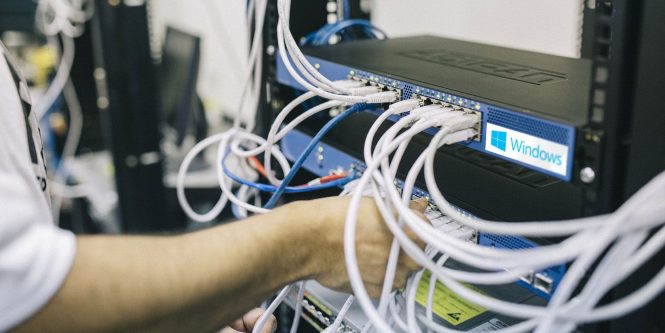

Troubleshoot Network Home Systems is crucial for maintaining a smooth and reliable online experience in your home. A sluggish internet connection, frequent disconnections, or frustrating buffering can quickly disrupt your daily routine. This comprehensive guide will delve into the common causes of home network issues and provide practical solutions for effective troubleshooting. Whether you’re dealing with wired or wireless connections, we will cover the essential steps to pinpoint the problem and restore optimal performance. This guide is structured to progressively tackle troubleshooting steps, starting with basic checks and moving toward more advanced techniques. We’ll cover everything from understanding basic network concepts to utilizing specialized tools for in-depth diagnostics.
Identifying Common Home Network Problems
Initial Checks
Often, network issues stem from simple problems that can be resolved quickly. Begin by verifying basic functionalities. First, check if other devices on your network are experiencing similar problems. Are others also encountering slow speeds or connection drops? If so, the issue likely lies outside of your individual device rather than a local setup error. If others are using the network without issue, proceed with troubleshooting your device. Check the device connection to the router. Is the cable securely plugged in? Is the Wi-Fi connection stable? Simple checks can avoid more complex investigations.
Understanding Network Components
The Role of the Router
Your router acts as the central hub for your home network. Understanding its role and configuration is essential. The router’s settings often contain critical data to understand network performance. Ensure that your router’s firmware is up-to-date, as outdated versions can lead to vulnerabilities and performance problems. Review the router’s signal strength indicator for clues. A weak signal often translates to intermittent connectivity issues.
Troubleshooting Wired Connections
Cable Issues and Device Compatibility
If your wired connection is experiencing problems, examine the quality of the Ethernet cable and connectors. Loose connections, damaged cables, or incompatible network interface cards (NICs) can cause connectivity issues. Verify the cable for physical damage. Inspect for frayed wires or broken ends. Inspect the connectors for damage, ensuring there are no pin-outs bent or damaged. Verify the settings of the network adapter on your PC or other devices to ensure the network settings are correct. Make sure the device and the router are using compatible network technologies. Consider a network cable test to eliminate any issues. Examine the network cable itself, especially the connectors, to identify issues.
Diagnosing Wireless Issues
Signal Interference and Range
Wireless networks can be affected by various factors. Interference from other devices operating on the same frequency, including microwaves and Bluetooth devices, can cause signal disruptions. Check for obstacles between your device and the router, like walls or thick furniture. Try strategically moving your router for a better signal, positioning it at a central location with an unobstructed view. Use Wi-Fi analyzer tools to pinpoint signal interference sources or check for weak spots in your home network’s wireless coverage.
Optimizing Network Performance
Network Congestion and Device Management
High network traffic can result in slowdowns. Limit the number of devices simultaneously using the network, especially if they are demanding high bandwidth. Consider using quality of service (QoS) features on your router to prioritize specific devices or applications if necessary. Verify if there are applications that are using a large amount of bandwidth. This can lead to significant network congestion. Monitor network activity using built-in network tools and applications to better understand traffic patterns.
Advanced Troubleshooting
Diagnosing Faulty Hardware and Network Configuration
If basic troubleshooting fails, consider the possibility of faulty hardware components. A failing network card or router may be the culprit. Check for error messages from network adapters or hardware components for possible hardware failures. Check the configuration of your network and router settings for incorrect parameters that could potentially interrupt the network.
Using Diagnostic Tools
Network Analyzer and Specialized Software
Network analyzers can provide detailed information about your network traffic. Identify potential bottlenecks or congestion areas. Utilize specialized software applications designed for network troubleshooting to examine your network’s performance and identify potential issues.
Preventing Future Issues
Regular Maintenance and Security Updates
Regularly update your router’s firmware and network devices to patch security vulnerabilities and maintain optimal performance. Keep your devices updated with the latest security patches for optimum stability.
Conclusion
This guide provided you with a complete walkthrough for troubleshooting common home network problems. We explored everything from simple troubleshooting steps to advanced techniques. By following these guidelines, you can proactively address network issues and maintain a stable, high-performing home network. Your home network is the backbone of your digital life; keep it functioning efficiently with these expert troubleshooting techniques. For more in-depth support, consult online forums or seek professional assistance. Be proactive to maintain your network’s health; these preventative measures will maintain your internet connectivity for longer periods of time, ultimately providing a more reliable and efficient digital experience. Check the internet speed regularly for optimum performance levels and seek help from a professional when necessary to avoid potential risks and issues. These precautions will help you understand how to troubleshoot your home network systems and how to proactively maintain the quality of your network, guaranteeing a more reliable internet connection for prolonged periods of time. Learn more at [Link to resource/website]. Reach out today for assistance! [Link to contact form/support site] Let’s fix your network problems now! [Link to contact information/specific help page].
Troubleshooting home network systems can be a daunting task, but with a systematic approach and the right tools, you can effectively diagnose and fix issues. By understanding common problems, utilizing diagnostic resources, and applying these solutions, you can reclaim a stable and reliable home network. Remember to always prioritize safety and consult with professionals when necessary. Further research into specific router models or network setup details can offer tailored troubleshooting options. Don’t hesitate to reach out to support forums or online communities for additional insights. Continue learning about network best practices to proactively prevent future issues and optimize your home network performance.